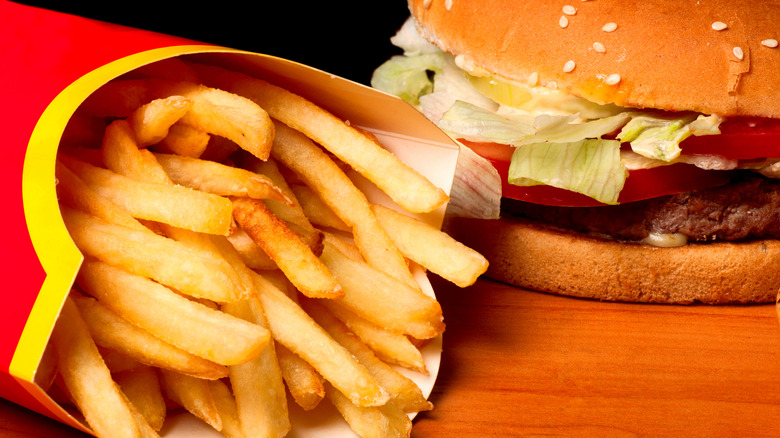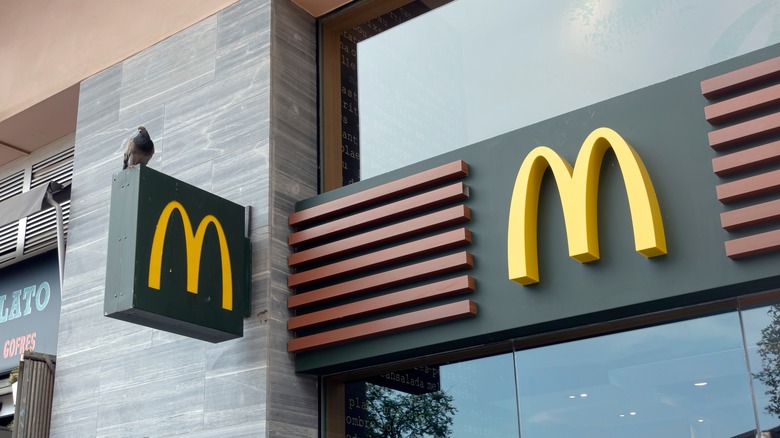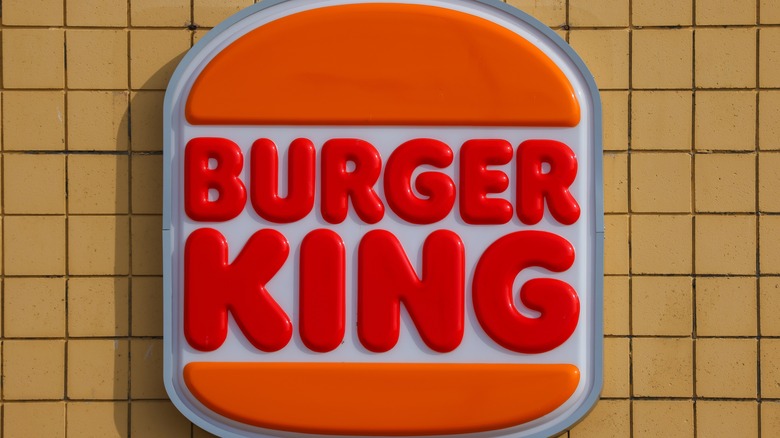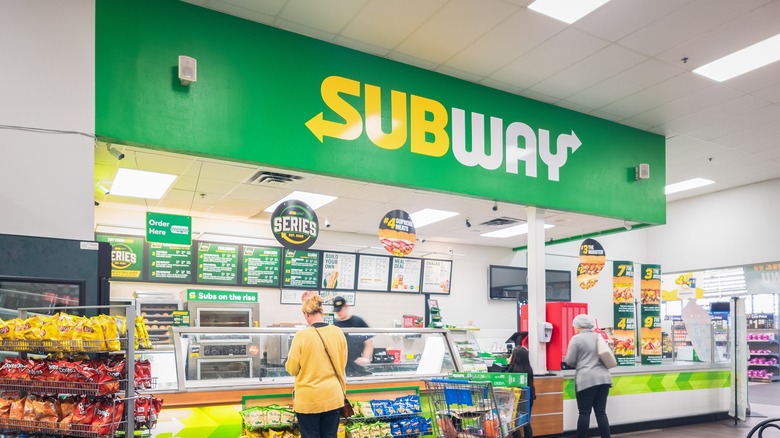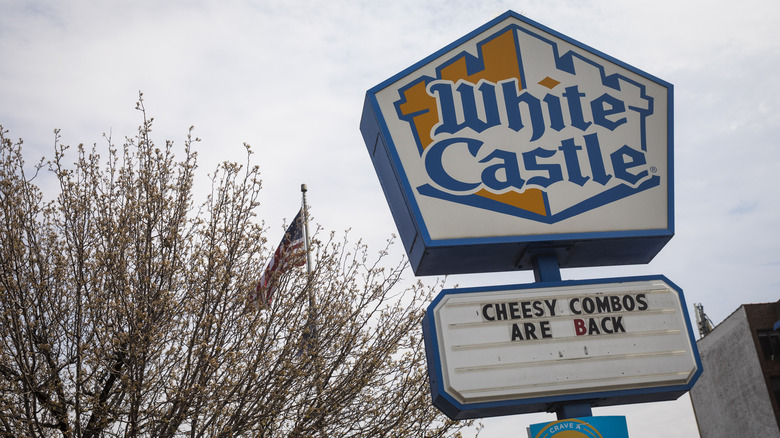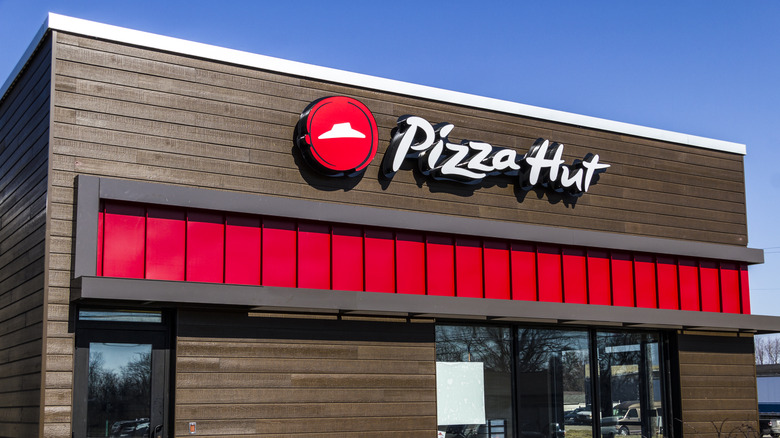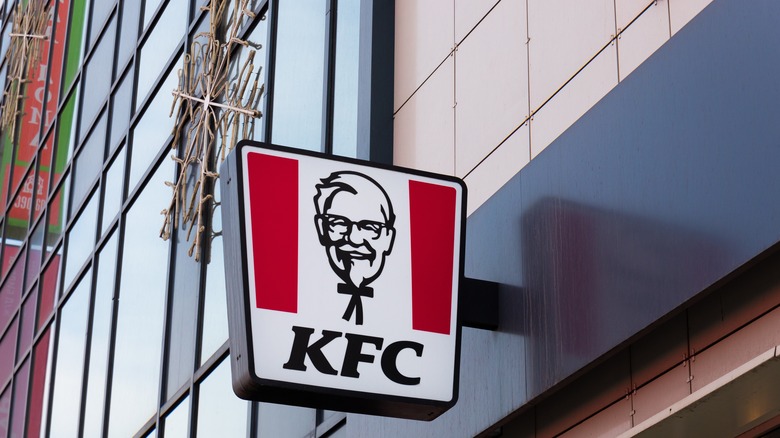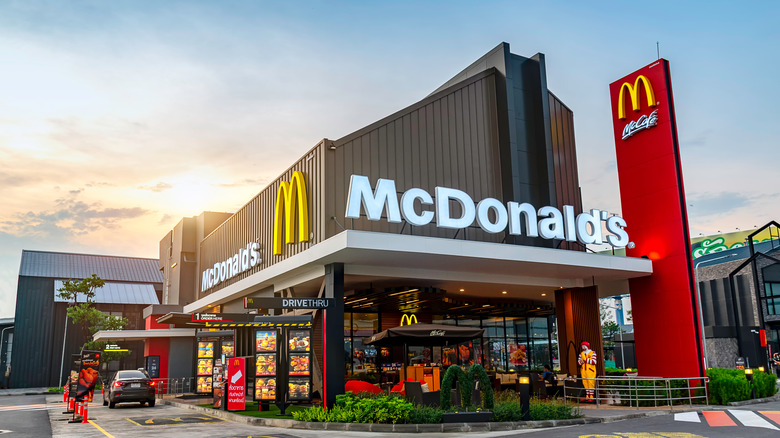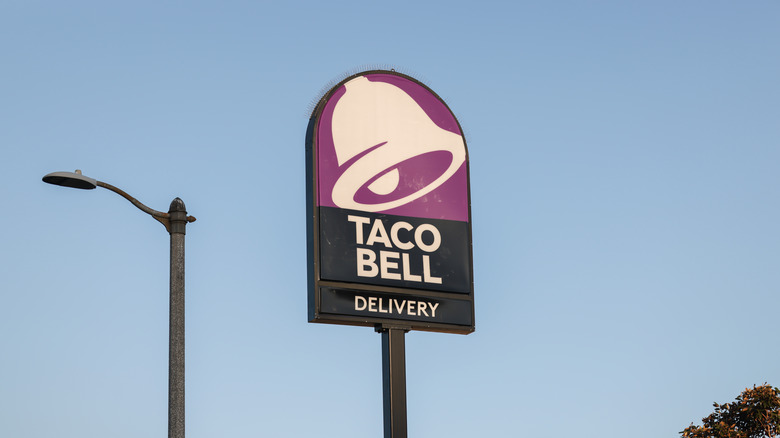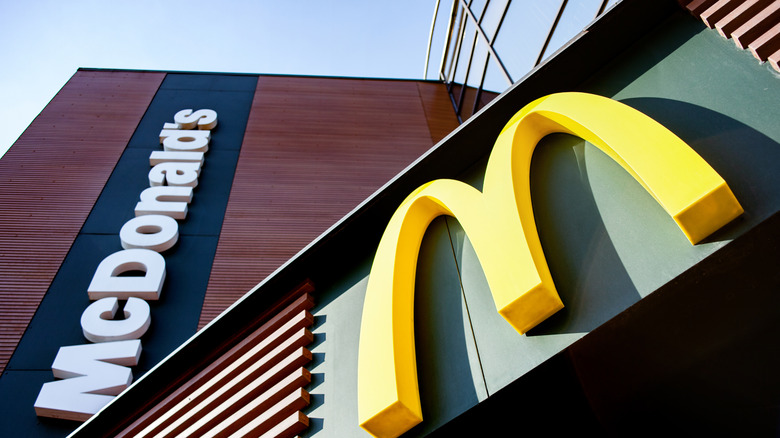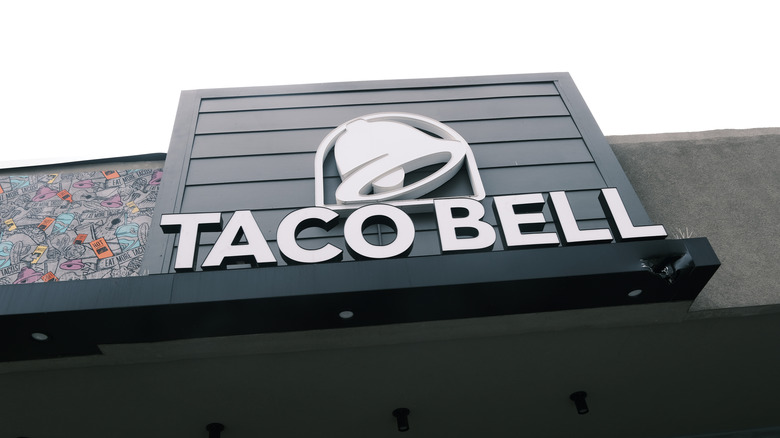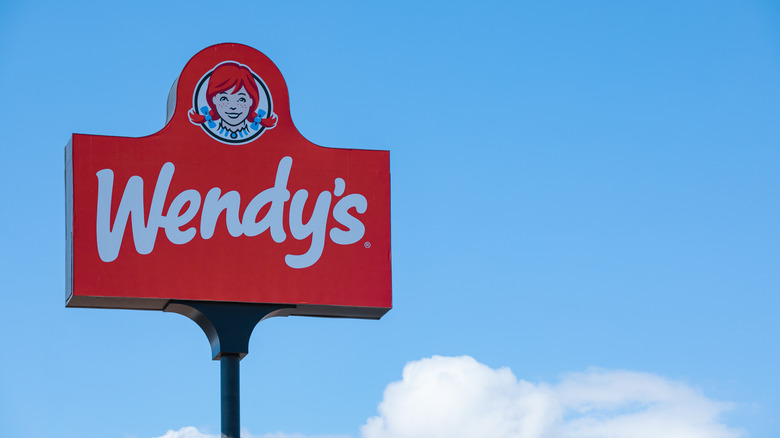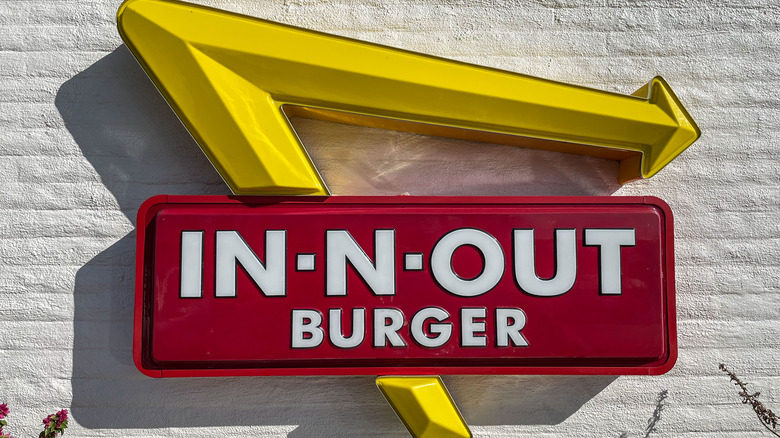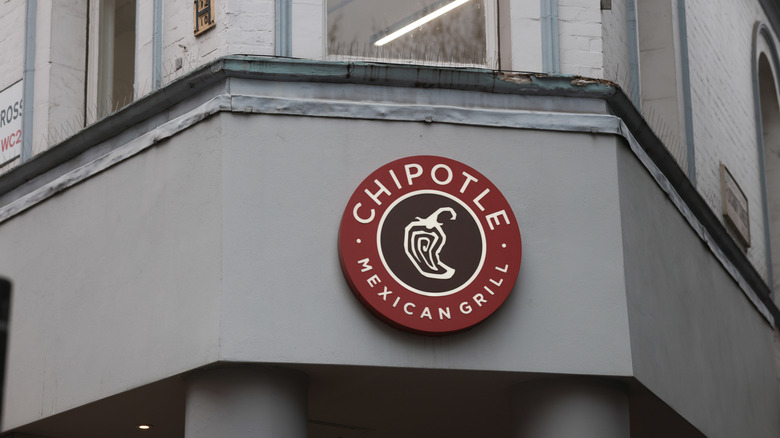How Much Fast Food Really Cost The Year You Were Born
They say two things in life are certain –- death and taxes -– but we'd like to add another item to the list: inflation. Though it's been worse in recent years, prices have only increased over the past 100 years, and the cost of fast food items is proof. From giants like McDonald's and Subway to more regional establishments like In-N-Out and White Castle, no fast food chain is impervious to price increases. But the increases can be attributed to more than just inflation. Crises like temporary food shortages and the threat of food insecurity have also caused prices to increase. And while oftentimes the prices will lower again once short-term issues are resolved, the overarching trend is upward.
To look at something as depressing as the increase of prices, we've organized the information in a much more palatable way. Whether this information makes you nostalgic or sick, here's how much fast food really cost the year you were born.
1955-1956
McDonald's has always turned an impressive profit. McDonald's brought in billions in 2022 (corporate report), and it was the 49th most valuable publicly-traded company as of February 2023 (Market Cap). Even amid economic uncertainty, the fast food mammoth has remained a leader in the industry, and it's been this way since Ray Kroc inserted himself in the business. McDonald's first opened as McDonald's Bar-B-Q in 1940, but by 1955 it was simply known as McDonald's, the first location of that name opening in Des Plaines, Illinois by Mr. Kroc himself.
But long before McDonald's was raking in billions per year, it was patting itself on the back for earning hundreds per day. In 1955, McDonald's sold hamburgers for just 15 cents each. Cheeseburgers were a little pricier –- those set customers back 19 cents a pop –- but french fries, coffee, orange juice, milk, and soda could all be purchased for just 10 cents, as told by a menu from the Des Plaines establishment. Kroc died in 1984, but he lived long enough to see McDonald's become a major success (granted that didn't take long), and he even earned enough money to invest in other business ventures, like the purchase of the San Diego Padres.
1957-1964
Just a couple of years before Ray Kroc entered the casual dining game, a worthy competitor hit the scene. In 1953, Burger King began operating, peddling its edible wares from then on. Many are under the impression that the Big Mac has always been the superior burger in the enormous patty sandwich competition between it and the Whopper. And while that's maybe been true since the Big Mac was created, there were several years in which the Whopper was the only option available. The Whopper was invented in 1957, shortly after Burger King's doors opened and the menu item was sold for 37 cents a sandwich.
Though 37 cents seems like a ridiculous bargain today (seriously, is there anything on the planet that you can buy for 37 cents?), back then, it was a bit of a splurge. For reference, McDonald's hamburgers went for just 15 cents at that same time -– less than half the price of a Whopper. Whoppers were, however, far larger than a plain hamburger, but it was still a purchase that required a little bit of planning. In 2021, to celebrate the 64th anniversary of the sandwich, Burger King ran a promotional deal for rewards members, making the Whopper available for 37 cents for a limited time only. The deal lasted just two days, and purchases had to be made online to be eligible for the special price.
1965-1966
Remember how the nation collectively lost its mind when Subway introduced its $5 footlongs? We did so for good reason -– it was a great deal. Now imagine purchasing a Subway sandwich at its original price –- 49 cents. That's right, when Subway opened, its sandwiches could be purchased for as little as 49 cents, and the prices capped at 69 cents a sandwich. The entire franchise began on just a $1,000 investment from Dr. Peter Buck, which, ironically, is how much it feels like you're spending when visiting the establishment today (to be fair, that's how it feels no matter what businesses you're patronizing).
For a while, Subway was the largest fast food restaurant chain in the entire world by number of restaurants, besting the likes of McDonald's, Burger King, and KFC. While Subway's prices aren't lower than McDonald's, it could have outranked the burger joint due to its quasi-healthy menu. Now, though, McDonald's is largest in both number of restaurants and revenue generated per year (via Statista).
1967-1969
Did you know White Castle is the oldest fast food chain in the world? It's okay. Most people don't. McDonald's is usually the go-to answer for most fast-food trivia, but it must bow down to White Castle regarding age. The fast casual joint began in 1921, and it even credits itself with being the first restaurant to offer take-out, a concept that deserves unyielding praise. The restaurant is also known for coining the term "slider," which refers to White Castle's square beef patty it used for its hamburgers. In 1967, those sliders cost customers just 14 cents. Even more remarkable, that 14 cents was a price increase –- the year before they sold for 12 cents.
White Castle has long continued its tradition of selling low-priced hamburgers. By the '80s, its sliders sold for 27 cents, and in 2008, when the chain celebrated its 87th anniversary with 27-cent burgers, the price hovered around 53 cents a burger. Now, depending on which location you visit, White Castle burgers sell for just under $1. While that's a far cry from the 14 cents it sold for in 1967, it's still a much cheaper burger than is available at most other restaurants.
1970-1974
If you can make it in the pizza industry, there's potential to rake in loads of cash each year. Americans love pizza, so much so that we, as a country, spent $19.8 billion on pies in 2021, per Statista. That's right, billions. That's a lot of pizza. We didn't always spend that much, though, partially because pizza cost only a fraction of the price it costs now. While most places will charge you at least $10 for a large pie today, Pizza Hut was selling large cheese pizzas for as little as $1.70 in the early 1970s, according to an old menu posted on Twitter. Just as it does today, the price varied by toppings, but the most you'd be charged was $2.70. The menu also specified its large pizza served two to three adults, so you might've been able to get away with paying even less if you were splitting a meal.
Perhaps Pizza Hut has been playing the long game this entire time. As of late, Pizza Hut has lost to Domino's Pizza for the title of most profitable pizza chain in America, but that could change if less-than-favorable sales figures continue for Domino's.
1975-1980
Kentucky Fried Chicken, now known as KFC, has long sold fried chicken to the country at cheap prices. And those prices were very, very cheap back in the mid to late-'70s. While that era is better remembered for bell bottoms and disco, it's also worth remembering that a family-sized bucket of chicken from KFC cost just $4.90, according to a Pinterest post of a menu from the time period. Imagine feeding your entire family for just $4.90. Extreme coupon-ers could never.
If the 1970s are remembered for their fun jeans and dance trends, the 2020s might be remembered for global health emergencies and extreme price hikes. Per the USDA, the average price of a whole chicken in February 2023 hovered at $5.49. That's significantly higher than what families paid KFC in 1975 for a bucket of chicken. Consumers are also worried about the price of eggs and what it indicates for food security, leading to an increased interest in raising chickens, which has caused major shortages in some hatcheries across the country. While KFC hasn't commented on the rising price of chicken, it has decided to remove some menu items, which, for some, is just as heartbreaking as kicking in a few extra bucks toward a Famous Bowl.
1981-1985
Big Mac has been part of the American lexicon since 1967. A few years before a new decade, McDonald's introduced the world to its signature sandwich, and life has never been the same. Its inventor, Jim Delligatti, felt adults needed a burger more suitable to their larger appetites, and by 1968 it was sold nationwide for just 45 cents. In 1981, the Big Mac, by then a staple of the McDonald's menu, cost $1.30. Big Macs today cost nearly five times the price in 1981. Despite that stark difference in price, what the present has in common with 1981 is the price jump, as both 1980 to 1981 and 2021 to 2022 saw major hikes in the cost of burgers.
No matter its price, the Big Mac is as much a part of American history as baseball or a Tesla. The sandwich has its own museum, and the amount of Big Macs sold each year outnumbers the number of citizens in the United States. Say what you want about the three-bun two-patty wonder, but it's more famous than most people, and it'll likely outlive us all. It might cost $20 when all's said and done, but the Big Mac will be here in perpetuity.
1986-1990
Every fast food chain has at least one item it's known for. KFC has its Famous Bowls. Wendy's has its Frosty. Dairy Queen is best known for its Blizzard, an ice cream treat that might as well make up its entire menu. Stuffed with vanilla ice cream and the customer's candy of choice, Dairy Queen Blizzards are a tough act to compete with by ice cream standards, and once upon a time, that time being 1986, the concoction could be purchased at locations across America for just $1.29. A larger option was available for $1.99, as well.
Today the Dairy Queen Blizzard is a veritable ice cream icon. Known for its (very strange) ability to be flipped upside down without spilling (is it actually okay to consume something with such a viscous resistance to gravity?), the Blizzard is constantly reinventing itself with new flavors, but old favorites stay in rotation, too. Though the prices for the snack have changed, it's also available in more sizes than it was in 1986. Plus, the franchise is great about hosting promotional days where Blizzards are sold at a fraction of their normal price, so keep your eyes peeled if you're looking for a deal.
1991-1996
Fast food has a rich history of experimenting, both with food and marketing. And in the early to mid-1990s, the experimentation was heavy. Chains were experiencing a conundrum of sorts where consumer reports differed from the hard statistics of sales. Overall, sales figures were down for many franchises, hence the tests of several new products and practices. For Taco Bell, that meant decreasing its snack taco price to 39 cents. Though that price isn't reflective of the fast food prices as a whole at that time, it is reflective of the crisis many chains experienced in that era.
While it's not quite to the extreme as it was in the '90s, Taco Bell is still widely regarded as one of the least expensive fast food franchises. Its Value Menu is rife with items that only cost $1, and several others only cost $2. Taco Bell wipes the floor with many of its competitors in price, and it's constantly creating new menu items to keep customers returning to try different offerings. The restaurant has even been known to bring back old favorites, like its Mexican Pizza that returned to the menu within the last couple of years after being removed for some time.
1997-2001
As mentioned before, the Big Mac is an American icon, and it has earned its status by fighting through several different setbacks. Since it opened its doors, McDonald's has been the fast food chain of envy, and its competitors have done all they can to even come close to Mickey D's in terms of revenue, status, and popularity. In 1997, some of those competitors came close, and McDonald's employed measures to ensure it remained on top, even using its beloved Big Mac as a pawn in the game. For customers, though, it was a positive play -– McDonald's reduced the price of the Big Mac by 55 cents.
Because the change was in response to market changes, the decrease didn't last long, and eventually the Big Mac returned to its $2 price. Customers, at that time, were also concerned with the taste and quality of McDonald's, which ultimately led to its slight downfall. The seemingly impervious chain eventually found its crown again, though, and it's continued to steadily sell burgers and nuggets since. There's really no reason to worry about McDonald's.
2002-2005
Several factors affect prices, but one thing is for certain -– as time goes on, prices go up. In 2002, Taco Bell sold its Grilled Steak Tacos for just $1.49. Today it costs nearly $3, almost twice as much as over 20 years ago. A Reddit user also points to a receipt from 1999 in which four items were purchased at the Tex-Mex restaurant for $3.50. At most fast-food restaurants today, you'd be lucky to purchase one item for that price.
Despite these insane price changes, Americans will still find a way to eat fast food, and the chains will find a way to lure customers. One surefire way: a celebrity endorsement. In late 2022, Taco Bell recruited "Saturday Night Live" alum Pete Davidson to promote its breakfast menu because a portion of its offerings, the restaurant told CNN, didn't appeal to customers. But thanks to the comedian, Taco Bell's breakfast sales have increased in a major way. Some of its breakfast items are even comparable in price to the 2002 Grilled Steak Taco.
2006-2012
In a world full of changing prices, it's comforting to know some items will always remain the same price, like the Costco hot dog. That's why it was so heartbreaking when Wendy's changed the price of its Junior Baconator in 2005. However, thanks to customer backlash, the company reversed its price change, and in 2006 returned to a 99-cent burger price, per The New York Times. The price reduction seemed like a win for the consumer, a clear message to corporations that they're at the whim of the masses.
Unfortunately, all good things must come to an end. In 2013, the restaurant increased the prices of some items on its value menu from 99 cents to $1.99, a huge blow to the wallets of Wendy's regulars. While $1.99 in and of itself isn't that expensive, it's a major increase from 99 cents, and proof that eventually prices have to go up. Our thoughts and prayers remain with Costco as they navigate the waters of inflation.
2013-2017
In-N-Out has been in business since the late 1940s. However, since it hasn't expanded too far east, it's not quite as popular as some of its larger competitors. Still, it remains a staple in the American fast food landscape, and it's always going to have customers in line, even amid price increases. Even with these increases, though, for quite a few years, In-N-Out's prices were below what experts figured they should be set at according to inflation, as told by KCET. In 2013, In-N-Out's Double-Double sold for $3.20.
But no need to worry about In-N-Out's prices versus inflation. It all worked itself out the following year when the chain increased its Double-Double price to $3.45, putting the sandwich's cost 11 cents higher than what experts saw fit. No expert has shared whether In-N-Out's prices today are adequate based on inflation, but the restaurant has experienced another issue in business –- shortages. "Unfortunately there is a widespread shortage of the whole cascabella chilies that we traditionally offer," a company representative told Nexstar in February 2023. The chain does have hot banana peppers for a swap, but it will likely be spring before patrons get their preferred chilies back.
2018-2023
Over a century after the first one opened, fast food restaurants are still popular in the United States, and they don't seem to be slowing down any time soon. Aside from select moments in fast food history, prices have only steadily increased. While some of us are shaking our heads at the prices and wondering how on Earth it can cost so much, others are wondering if, perhaps, some fast food restaurants aren't charging enough. Back in 2018, Chipotle was selling its chicken burrito for $7.05 while Qdoba's cost $7.94, leading QSR Magazine to debate whether the former should increase its prices to compete more closely with the latter.
Eventually Chipotle did raise its prices, and now, in 2023, a chicken burrito hovers around $9 in price, while a steak burrito costs nearly $11, though the exact price varies from location to location. We'll stay vigilant in the watch for rising fast food prices, perpetually advocating that they be lower.
